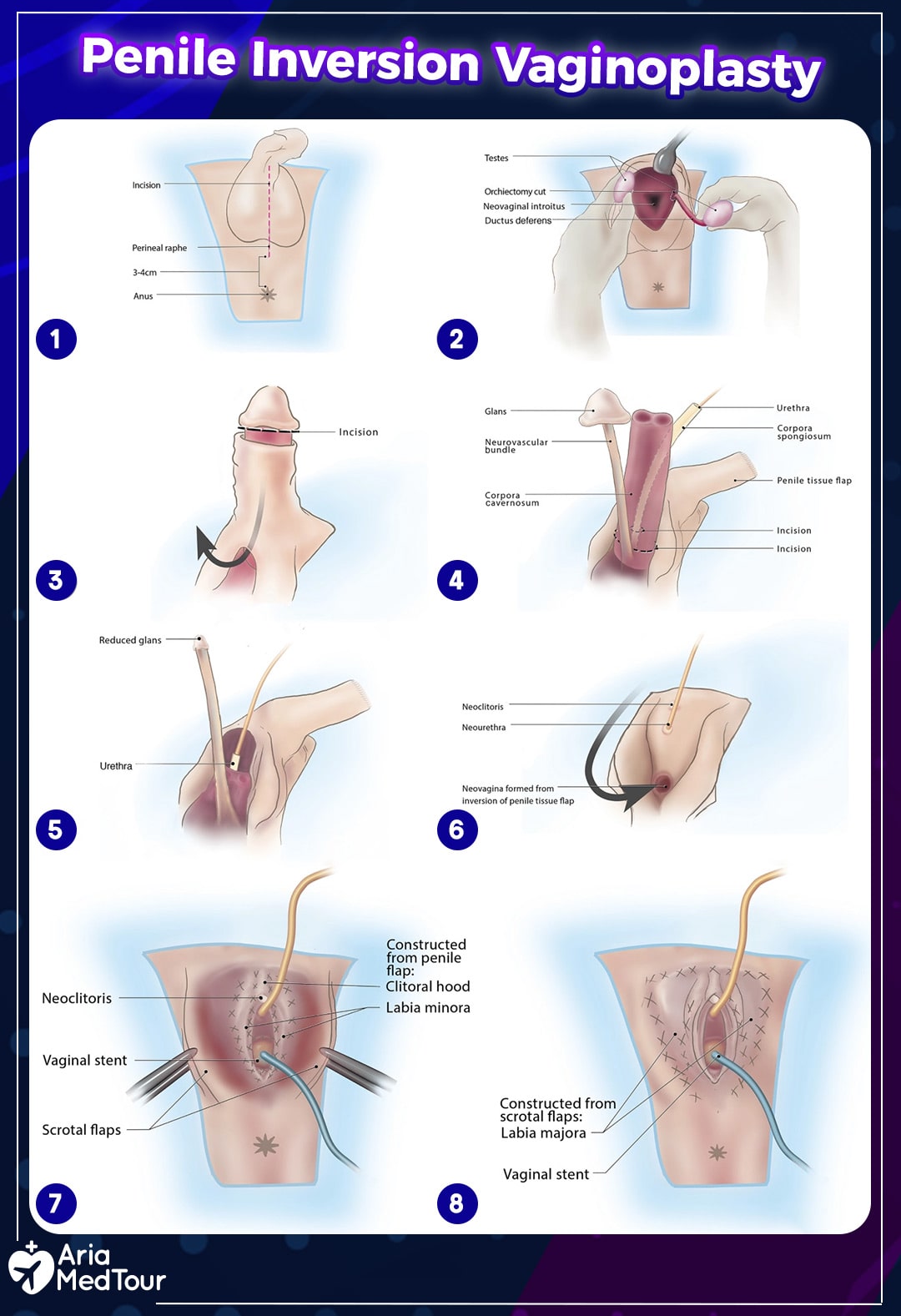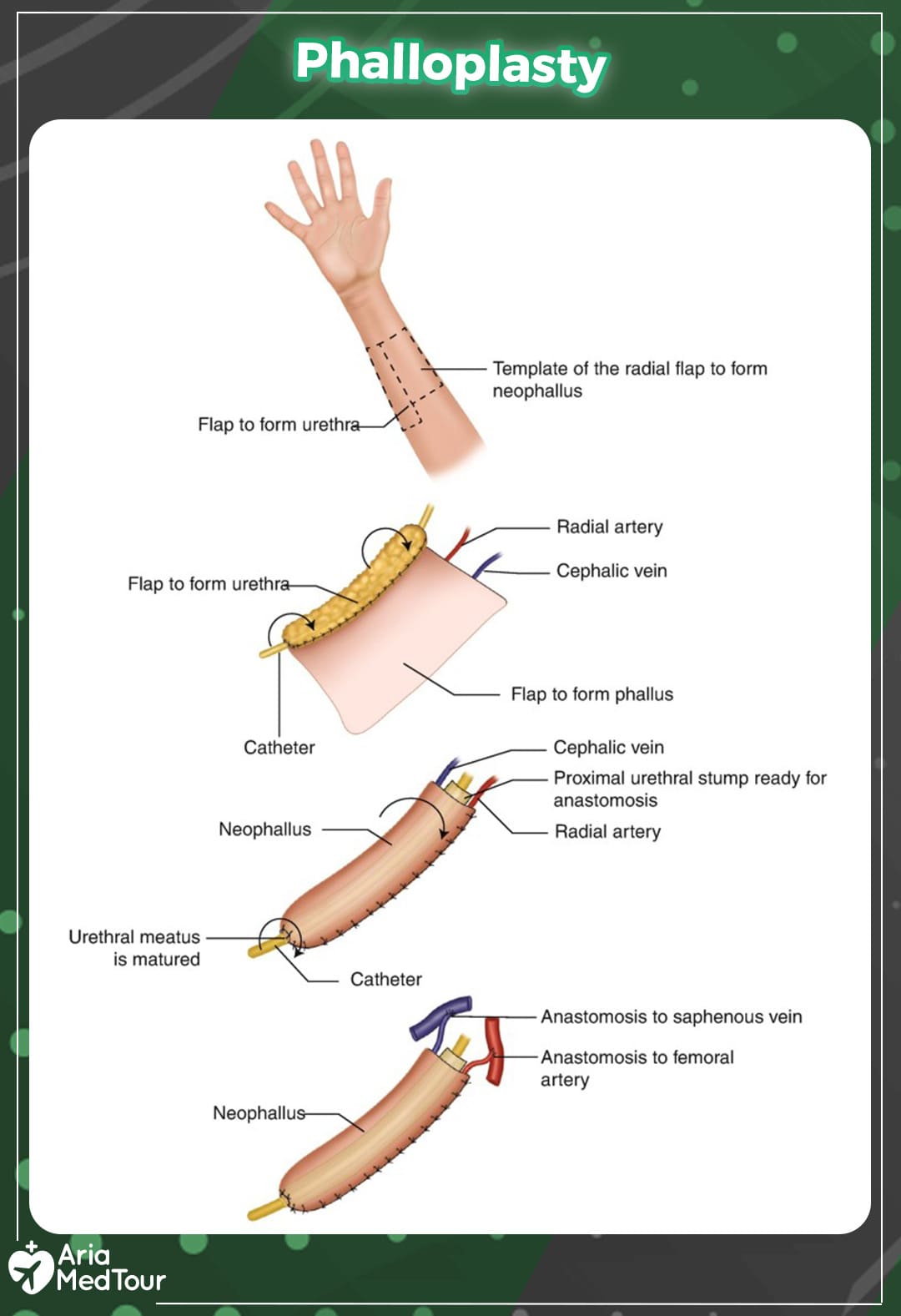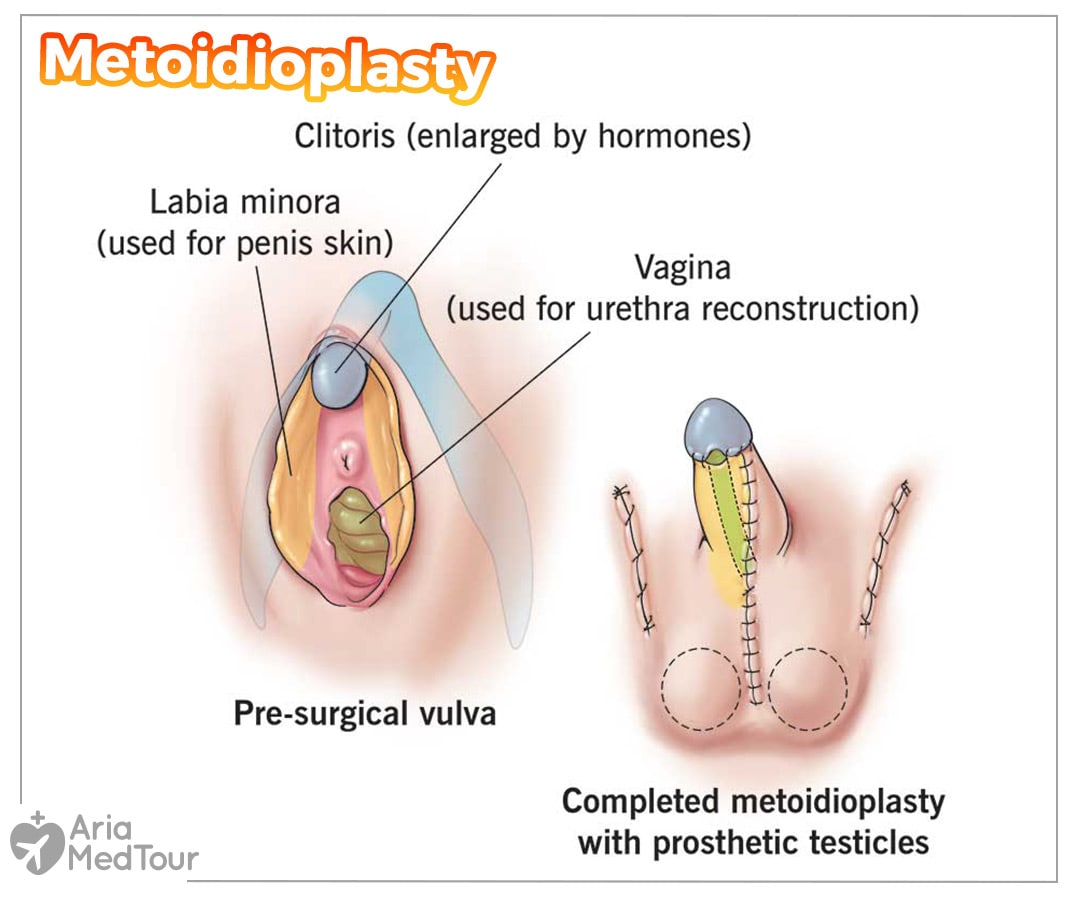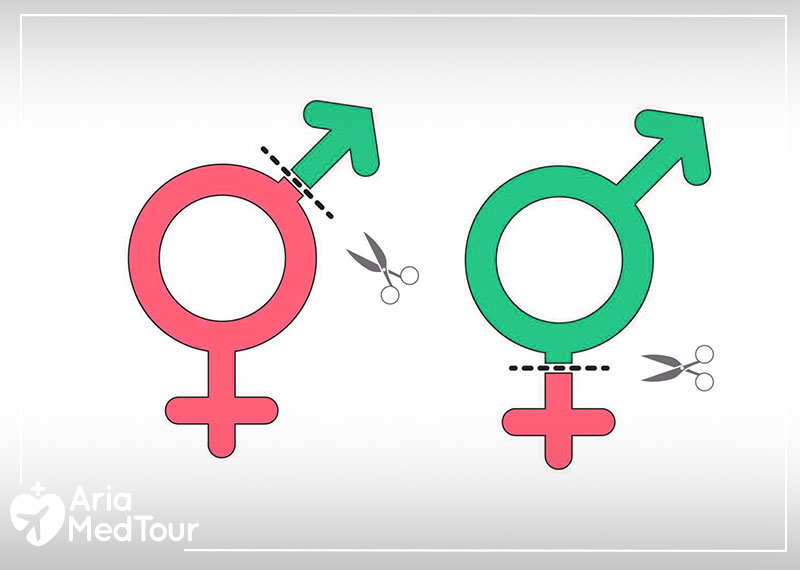Sex reassignment surgery, also known as gender affirmation surgery, gender confirmation surgery, gender-affirming surgery, and even traditionally known as sex change surgery refers to the surgical procedures that help transgender or non-binary people transition from their assigned gender at birth to their identified gender.
The journey of transitioning from one gender to another may include a series of social, physical, medical, and legal processes to help alleviate gender dysphoria in transgender people and bring them more satisfaction. While not all transgender people choose to transition, many decide to go through at least one or some of the transition areas to reduce gender dysphoria or increase gender euphoria, the strong feeling of happiness and relief as a result of moving to one’s identified gender.
Today, many transgender people consider undergoing surgery to feel better matched with their self-identified gender.
However, since surgery is a permanent change, according to the Standards of Care for Transgender individuals, you need to meet some criteria before undergoing genital sex reassignment surgery.
In this article, we will go through all forms of transitioning with a special focus on surgical transition. Therefore, we’ll review the steps of gender affirmation surgery in Iran, including the requirements before the surgery, what to expect during your treatment journey in Iran, and things to do after the surgery. So whether you think you’re a gender-affirming surgery candidate and ready to undergo the procedure in Iran or are not ready and have a lot of questions in mind, this article is for you. It can help you figure out where you stand in this journey, whether the surgery is right for you, and what to do next.
Gender Transitioning Journey
As someone who feels inconsistent with the gender assigned to them at birth, you may have experienced so much distress related to this issue, medically referred to as gender dysphoria. Many transgender would love to go through transitioning to reduce gender dysphoria and put an end to many of those difficulties and disappointments.
As briefly mentioned above, the journey of transitioning from one gender to another can include various areas. The following are different aspects of gender transition. But a transgender interested in transitioning does not necessarily go for all aspects and follow the same order of steps.
Social transitioning
Social transitioning could be defined as a series of actions you take to socially introduce yourself with your identified gender. Your audience may be as small as your family and friends or go further and include the society around you. Your social transitioning can include coming out to your family and friends, asking them to call and refer to you by a different name and pronoun, and appearing in the role and clothes that feel right and matched to your identified gender in public.
Physical transitioning
Physical transitioning includes non-medical practices to temporarily change the way the body appears usually using techniques for covering physical features of the assigned gender and highlighting or creating the illusion of bodily characteristics of the gender you identify with. These techniques may include chest binding and packing for transgender men or stuffing (using padded underwear) and tucking for transgender women.
Medical transitioning
As the name suggests, this area of transitioning requires medical care and unlike previous areas can not be practiced without the doctor’s prescription, help, and supervision. Medical transitioning can be divided into non-surgical and surgical transitioning.
Non-surgical transitioning
Non-surgical medical transition generally includes taking medications such as puberty blockers or hormones that block the secondary sexual characteristics of the assigned gender at birth and develop those of the gender you identify yourself with.
Surgical transitioning
Surgical transitioning refers to a series of surgical procedures mainly known as gender-affirming surgery or sex reassignment surgery which are performed to permanently change the shape and appearance of body features in a way to make it look closer to the bodily characteristics of the gender you identify yourself with.
While surgical transitioning mainly refers to the surgical change in the genitalia, under a broader concept it can include a variety of procedures classified into bottom surgeries (dealing with genitalia), top surgeries (dealing with chest area), and facial surgeries (dealing with feminine/masculine facial features). Gender-affirming surgery can not be the first step in the transition. There are special requirements you need to meet before considering surgery, specifically the bottom surgery. We will deal with the eligibility criteria in the following sections.
Legal transitioning
This step includes the changes in your legal documents such as ID cards, passports, driving licenses, etc. which facilitate transitioning in official and legal contexts. In many places, legal transition can occur after sex reassignment surgery. Yet, new rules are trying to facilitate this procedure and surgical transitioning may not be a requirement in some countries.
Bottom (Genital) Surgery
As already mentioned, gender reassignment surgery, or more specifically bottom surgery refers to the procedures which transform the appearance of genitalia. Depending on the surgery’s goal which could be a male-to-female or female-to-male transition, different surgeries could be used. vaginoplasty, phalloplasty, and metoidioplasty are the three main practices of genital surgery that can be performed using different techniques depending on the case. Let’s review different methods of genital reconstruction surgeries in Iran.
Male to Female (MTF) Bottom Surgery
This step includes the changes in your legal documents such as ID cards, passports, driving licenses, etc. which facilitate transitioning in official and legal contexts. In many places, legal transition can occur after sex reassignment surgery. Yet, new rules are trying to facilitate this procedure and surgical transitioning may not be a requirement in some countries.
Penile Inversion Vaginoplasty
In this method, a space is created in the area between the rectum and the prostate to build the vagina canal. The inverted penile skin is used to make the vagina walls, and scrotum tissue is used to construct the labia majora and labia minora. The advantage of this method is a sensate vagina and labia but the disadvantage is the lack of self-lubrication in the walls of the vagina. The attempt to address this issue has led to a variation in the surgery technique in which the mucosal urethra is extracted from the penis to cover part of the vagina walls and help with slight self-lubrication.
Suporn’s Non-penile Inversion Vaginoplasty
In this method, scrotal skin is used to build vaginal walls, and the penile tissue is used for constructing the labia and clitoral hood. Supron’s method often leads to a deeper neovagina with sensitive areas in the same spots of cis-women. This method has also addressed the lubrication issue by retaining the bulbourethral gland.
Rectosigmoid or Colon Graft
In this method, the walls of the vagina are lined with intestinal tissue which adds self-lubrication quality to the neovagina due to the mucosal nature of the intestinal tissue. This method could be used alone or in combination with penile inversion especially when there’s not enough penile and scrotal tissue to build the whole structure.
Female to Male (FTM) Bottom Surgery
Constructing the neopenis for transgender men is usually done through one of the following methods.
Phalloplasty
Phalloplasty usually includes taking a flap from another part of the patient’s body (donor area) which could be thighs, forearms, or back and using it to construct a neopenis and lengthen the urethra. Patients may choose to have a penile implant inserted through a secondary surgery for full erection which helps with penetrative sex.
Metoidioplasty
Compared to phalloplasty, metoidioplasty is a much simpler approach that releases and repositions the gradually augmented clitoris (3-8 cm) through hormone therapy to make up for the penis and match its position. A full metoidioplasty can also include lengthening and connecting the urethra to the neopenis which makes urinating possible in a standing position.
Transgender Surgery in Iran
In Iran, while it is possible to do all the procedures to feel as matched as possible with the gender of interest, there are some steps to take before doing the bottom surgeries or genital reconstruction surgery which leads to the change of the physical appearance of the genitalia.
Unlike some other countries where sex reassignment surgeries take place in illegal or non-accredited centers regardless of the standards of care for transgender individuals, in Iran, transgender surgery is only performed in accredited quality hospitals by a professional medical team including surgeons and medical specialists of different fields to make sure the surgery is done according to all the standards and all the criteria have been met. Therefore, as the first step, you need to have medical permission to be eligible to undergo the bottom surgery.
Here are some very important facts you need to know before considering genital reconstruction surgery in Iran:
Before Genital Reconstruction/Bottom Surgery in Iran
The followings are the requirements and the steps you need to take to be eligible for having sex reassignment surgery (bottom surgery) in Iran.
General Requirements for Surgical Gender Transition
● You need to be at least 18 to be eligible for genital reconstruction surgery.
● You need to have medical permission for bottom surgery (genital reconstruction) from your country of origin.
● Being in an older age group is not a barrier. What defines your eligibility for surgery is your health condition. You can have the surgery provided that your psychological and medical examinations such as cardiac analysis confirm that you are physically and mentally ready and able to stand the pressure of this surgery.
Why And How to Get Permission for Genital Surgery
● The first step in the transitioning journey from one gender to another is to refer to a psychologist doctor/psychiatrist for psychological evaluation and psychotherapy, followed by referring to an endocrinologist for prescribed and supervised hormone therapy.
● Permission for surgery can be obtained by two recommendation letters issued by a psychiatrist/psychology doctor and an endocrinologist after 1 to 3 years of hormone therapy and psychotherapy to confirm continuous gender incongruence.
● The permission for genital reconstruction surgery can not be issued immediately and through limited therapy sessions. You need to take at least one year of psychotherapy and hormone therapy.
● Without permission for surgery, you can NOT undergo sex reassignment surgery in Iran or any other country with accredited health centers conforming to the Standards of Care for the Health of Transgender and Gender-diverse People (SOC) developed by the World Professional Association for Transgender Health (WPATH).
● Having permission also facilitates your trip to Iran and prevents any issues in the airport or hotels resulting from probable inconsistency among your passport photo, your current appearance, and the gender assigned to you in your passport.
Facts about Genital Reconstruction Surgery in Iran
● A genital reconstruction surgery only helps you to change the appearance of the genitalia and is NOT going to increase your sexual function, activity, and sensation.
● A genital reconstruction surgery is not going to magically change your sexual life.
● While a 10-20% improvement in sexual activity is possible, especially in younger individuals, there’s NO GUARANTEE. And this is not the primary goal of sex reassignment surgery.
● The surgery is more successful and brings higher satisfaction in younger individuals, generally, people under 40. While there’s no age restriction except for being above 18, the younger you are, the better results you can expect both physically and sexually.
● The primary goal of sex reassignment surgery is to help you feel more matched and close to your identified gender from the appearance aspect so that you can also feel more comfortable and confident in your social life.
● This surgery is NOT considered cosmetic to enhance the appearance and beautify the genitalia. You may be able to do some cosmetic surgeries afterward, but cosmetic shape enhancement is not the goal of sex reassignment surgery.
● Nerve damage is a possible side effect of genital surgery. However, the surgery methods performed in Iran make use of advanced techniques to avoid hurting sexual sensation, instead, to maintain it as much as possible.
● Considering this surgery is a serious and complicated procedure offering permanent results, you will have to have some pre-surgery visits with the psychologist/psychiatrist and endocrinologist here in Iran and also some pre-surgery tests and medical examinations to reconfirm that you’re physically and psychologically ready and determined to undergo sex reassignment surgery. The medical commission in Iran must approve that you’re able to handle the surgery.
● You need to make up your mind and be completely sure about your decision to undergo the surgery.
● You will have to sign an informed consent before the surgery in which you confirm that you are fully aware of your surgery benefits and risks and are responsible for your decision to undergo the surgery.
● You need to stay at least 30 days in Iran for your procedure, considering the procedure is major surgery and also requires some pre and post-surgery visits (About 3-4 post-surgery visits and follow-ups).
● You need to know that this period may have to be extended for your safety and health.
● You can not be on your own after the surgery. You will need to have a companion with you to take good care of you since a major surgery like this imposes heavy physical and psychological pressure on you.
● Make sure you’ll bring an adult companion who is mature, caring, accepting, and compassionate to accompany and take care of you during this journey.
● The surgery is performed and supervised by a team of medical specialists including urologists, gynecologists, and urologist surgeons.
● Genital reconstruction surgery is a complicated procedure, performed by a team of specialists. The cost of surgery may vary for each patient depending on the method, techniques, and scope of the surgery. You can expect the surgery cost to start from US $ 10,000.
After Genital Reconstruction Surgery
● You can come back to Iran for one or two post-surgery visits in person within the first 6 months. Otherwise, you can be in contact with us online for monthly follow-up sessions up to a year or even two from the surgery.
● You can have other complementary surgeries for transitioning such as top or facial surgeries with an interval after your genital surgery. While you can start having complementary surgeries 3-6 months after your bottom surgery, we recommend you wait at least one year so that your body completely heals and gain back its strength before undergoing another major surgery.
● Facial feminization/masculinization surgeries costs usually start from US $ 5000.
● You can enjoy discounts on your further surgeries if you opt to do them in Iran. However, we still recommend that you wait at least one year before going for other procedures.
● You need to stay for about 30 days in Iran for each major surgery or if you opt to have multiple surgeries in one stay.
Last Word
Gender transitioning is not a one-step procedure and is much similar to a journey with multiple destinations. A full transition including surgery may take years to accomplish considering its prerequisites and post-operative recovery.
Surgical transitioning, in particular, can be a more serious and complicated stage considering all the risks and benefits of a surgical procedure. And the key to high satisfaction after the surgery is patience and awareness.




























I. Have a desire to have my penis removed
dear Rowan…please message our WhatsApp at +989129570479 and send your medical documents from my colleagues in the consulting department…
I’m planning to start my gender transition soon and have been researching mtf bottom surgery options. As a future post op trans woman, I want to fully understand what is bottom surgery and how the recovery process works. Does Iran offer safe and affordable options for international patients?
Hi Alyssa! We’re glad you’re taking the time to learn more about your transition. In Iran, surgeons are highly experienced with bottom surgery MTF procedures, and many international patients travel here for their transition. The transgender process includes counseling, medical evaluation, hormonal therapy, and surgery planning. Our surgeons provide detailed explanations of what bottom surgery involves, including technique, recovery, and aftercare. Feel free to contact us for personalized guidance.
I’m FTM and trying to understand the full transgender male meaning including medical and surgical steps. Do you also provide any resources like female to male transition photos or information about female transgender body structure before starting hormones or surgery?
Hi Oliver! Yes, we help FTM individuals understand the complete transgender process, including hormonal changes, chest surgery, and genital reconstruction. Our specialists explain how female transgender body structure changes over time and can share safe, medically accurate female to male transition photos for educational purposes. We’re here to support you at every stage of your transition.
I’ve been comparing trans surgery male to female cost in different countries. Could you tell me how much the transgender surgery male to female cost is in Iran? I’m also curious how much is bottom surgery on average.
Hi Sofia! Iran is known for offering high-quality MTF procedures at much more affordable prices compared to many Western countries. The exact trans surgery male to female cost depends on the surgical technique and patient needs. We also provide detailed estimates for how much is bottom surgery, hospital fees, anesthesia, and aftercare. Contact our team for a personalized cost breakdown.
While researching gender-affirming care, I keep coming across terms like trans bottom, srs trans meaning, and bottom surgery mtf. I want to make sure I fully understand the terminology before moving forward.
Hi Jamie! The terminology can definitely feel overwhelming at first. The term SRS trans meaning refers to “Sex Reassignment Surgery,” which includes procedures such as bottom surgery MTF or FTM reconstruction. Meanwhile, trans bottom or “bottom surgery” describes genital reconstruction surgeries that help align a person’s body with their gender identity. If you’d like, we can help you understand each step of the transition process in more detail.